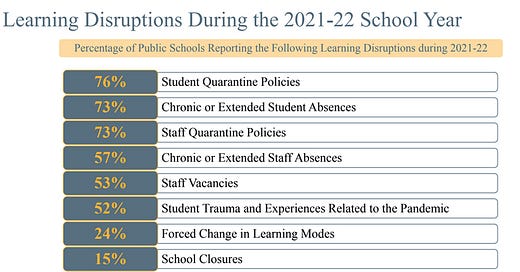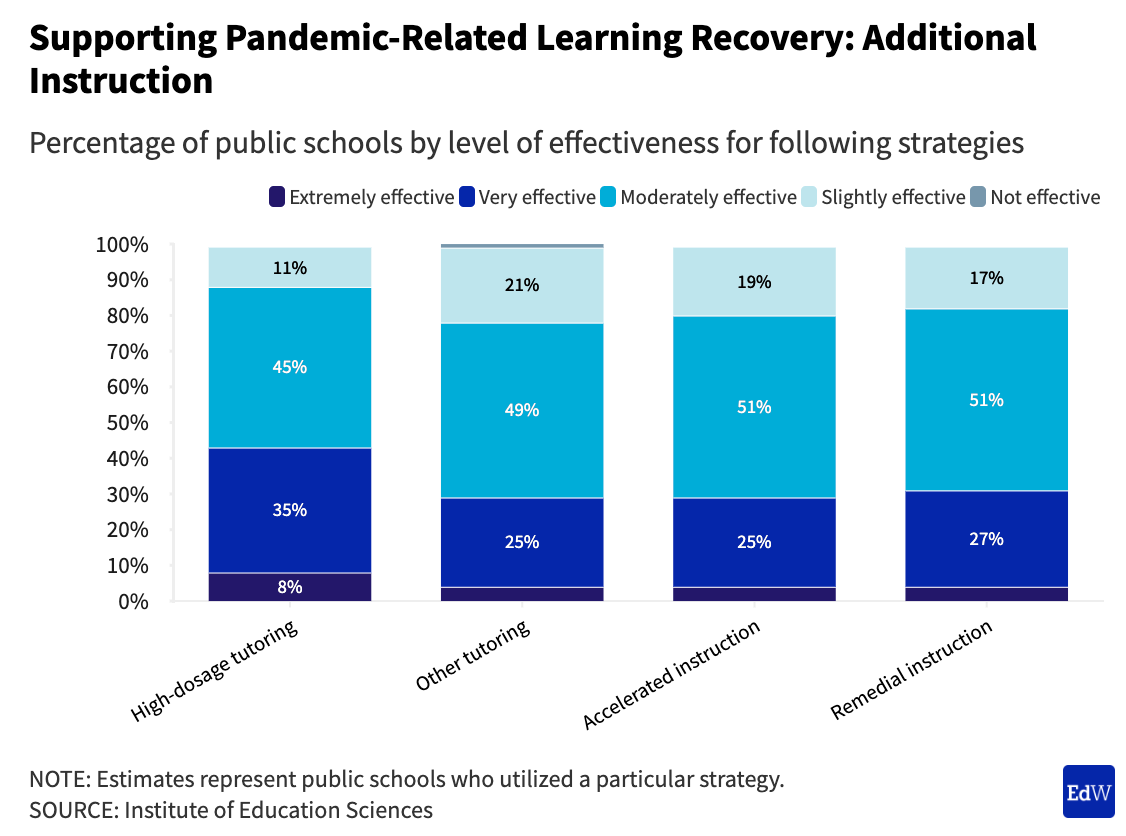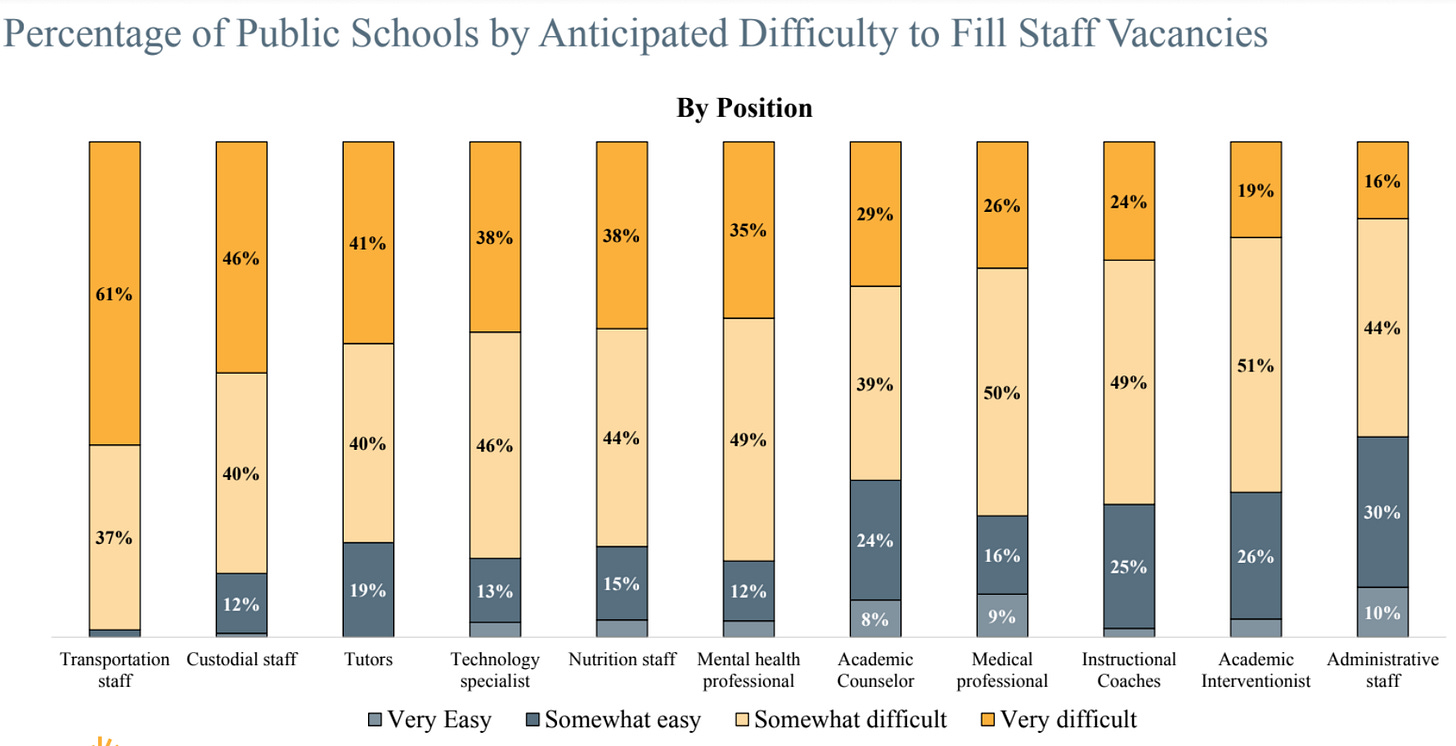Top Three
Less Than Half of Parents Plan to Vaccinate Young Kids Against COVID: Survey published in JAMA.
45.6% said that they would "definitely" or "probably" have their child vaccinated once they became eligible, but only 19.0% said they would do so within 3 months of their eligibility, while 47.3% would wait longer, and 33.7% said they didn't know if or when they would seek vaccination.
Those least likely to have their child vaccinated within 3 months of eligibility were women rather than men (15.6% vs 21.8%), were less educated (16.9% had a high school diploma or less, 12.9% had a college degree or trade school certificate vs a bachelor's degree or more [25.2%]), and were unvaccinated against COVID-19 versus at least partially vaccinated (4.1% vs 29.1%).
30.5% of vaccine-hesitant parents said that more information on vaccine safety could assuage their concerns, while 28.3% said that more information on effectiveness would do so. Other possible facilitators were full FDA approval of a COVID-19 vaccine for this age-group or worsening COVID-19 severity (both 21.3%).
"The hesitancy of parents of children in this age group to get their child a COVID-19 vaccine may reflect the fact that even parents who reported that they “probably will” vaccinate their child have at least 1 major concern about their child receiving a COVID-19 vaccine. Taken together, our results suggest that considerable efforts to increase parental COVID-19 vaccine confidence for children aged 6 months through 4 years may be needed in the United States to maximize COVID-19 vaccination for this age group."
Here’s What School Covid Policies Should Look Like This Year: Joseph Allen in the NYT
"The societal risk from Covid is rapidly changing for the better. The individual risk to kids is — and has always been — low. The crisis kids face at this point in the pandemic is not the virus, but the cost of so many years of disrupted school."
"The overriding goal for the next school year should be to maximize time in the classroom and make school look and feel much like it did before the pandemic started. The way to do this is to get rid of excessive quarantine and isolation policies, and to rely on the protective power of vaccines and prior infections, with masking reserved as a strategy to get kids back in the classroom quicker after they’ve been sick."
"Of all age groups, they have the lowest risk of hospitalization....Parents have the option to make this low risk of hospitalization more trivial through vaccination."
"First, schools should be open. They should never have closed and should never close again. That was a mistake we will pay for over decades."
"Ventilation and filtration should continue to be key focuses."
"As for testing, there are four main goals: clinical diagnosis (“Do I have Covid?”), surveillance (“How much Covid is circulating in our school or community?”), as a control measure (“Does this person who might enter the school unknowingly have asymptomatic Covid?”) and as a way to end isolation (“Is this person no longer infectious?”)."
"For the coming school year we should use testing only for the first goal: testing to diagnose disease, not for surveillance or potential transmission control."
"Quarantining should end. We shouldn’t have kids miss school because they are close contacts of someone who had Covid. This practice is disruptive, has forced entire classrooms to miss two weeks of school unnecessarily and led to increased rates of “chronic absenteeism."
"People can remain infectious past five days, and some for 10 days and even beyond. The C.D.C.’s recommendation is to isolate for five days, and then mask for five more. That’s smart. It relies on masks because they work."
School Pulse Survey: New results from IES.
50% of students began the 2021-22 school year behind grade level in at least one academic subject, which is 14 points higher than the percentage of students they estimated to be behind grade level in at least one academic subject at the beginning of a typical school year before the pandemic began (36%).
"The percentage of public schools that reported having to quarantine students in June was 34%, a decline from the 47% in May."
EdWeek: "More popular among schools was remedial learning: going back to past years’ content. 72%t of schools said they used this strategy. This is in contrast to the 39% that used accelerated learning, a strategy that attempts to keep moving students forward while shoring up skills and content that they might have missed in previous grades at the same time.About three-quarters of schools said that student quarantines or chronic absences disrupted learning during the 2021-22 school year."
“It feels like there’s a bit of a story here that schools are working to catch students up, but a lot of that’s happening on the margins, and there’s still a lot of opportunity lost during the actual school day. And that makes sense when you … look at those data about student quarantines and absences,” said Bree Dusseault, principal and managing director at the Center on Reinventing Public Education, which was not involved with the study."
Federal
2022 IES Learning Acceleration Challenges: Enter by September 30
The Math Prize seeks school-based, digital interventions to significantly improve math outcomes for upper elementary school students with or at risk for a disability that affects math performance. Interventions should specifically focus on fractions, and can also include prerequisite skills such as whole numbers and operations.
The Science Prize seeks interventions to significantly improve science outcomes for middle school students with low performance in science. Interventions may be digital, non-digital, or hybrid and designed for implementation at school or in out-of-school-time programs.
Covid-19 Research
New Covid Tests: Abbott to ship millions of $5, card-sized coronavirus tests offering 'digital healthpasses'
"The rapid antigen test is designed to deliver a reading from a nasal swab within 15 minutes and is paired with a free, optional smartphone app capable of logging and displaying COVID-19 test results—providing a “temporary digital health pass” that could help clear people for entry to places such as schools, hospitals, workplaces, airports and elsewhere."
“This new COVID-19 antigen test is an important addition to available tests because the results can be read in minutes, right off the testing card. This means people will know if they have the virus in almost real-time,” said the FDA’s device center director, Jeff Shuren. “Due to its simpler design and the large number of tests the company anticipates making in the coming months, this new antigen test is an important advancement in our fight against the pandemic.”
3 or 4 COVID Vaccine Doses Protective Against Omicron: Via CIDRAP
"The rate of breakthrough infection was 7% in workers who received four vaccine doses, compared with 20% in the 4,802 of 24,280 who received only three. A matched analysis by day of receipt of the third dose found comparable reductions in breakthrough infections. No severe illnesses or deaths were reported in either group."
"Considering the high infectivity of the Omicron variant, which led to critical medical staff shortages, a fourth vaccine dose should be considered to mitigate the infection rate among HCWs," the authors wrote."
"Memorial Sloan Kettering Cancer Center researchers compared the effectiveness of two versus three doses of an mRNA COVID-19 vaccine against infection in more than 20,000 New York City HCWs during the Omicron surge from Dec 15, 2021, to Jan 15, 2022. The breakthrough infection rate ratio was 0.67 for two versus three doses, for a 33.2% higher vaccine efficacy third-dose efficacy than after two doses. In the 14 days after the third vaccine dose, 6.4% of HCWs had a breakthrough infection. Omicron infections were mild, and 16% of third-dose recipients and 11% of two-dose vaccinees had no symptoms."
Covid Has Settled Into A Persistent Pattern: It may not change anytime soon, Stat reports.
"Average daily deaths have rarely dipped below 300 since last summer. More recently, as the latest Omicron subvariant BA.5 fueled another burst of transmission on top of an elevated plateau of cases, deaths have surpassed 400 a day (though the BA.5 wave appears to have crested). Such levels are far higher than those seen with other respiratory viruses, especially in the summer."
"Perhaps more worrisome is the fact that many experts don’t foresee much change anytime soon. While there will be ups and downs, some forecasts project 100,000 annual Covid deaths, if not more, for the next several years. Ignoring seasonal variation, that’s some 275 deaths a day."
“It’s hard for me to see, barring any massive change in the way we’re treating the virus right now or trying to manage it, that anything inherent to the virus is really going to change much,” said Stephen Kissler, an epidemiologist at Harvard’s T.H. Chan School of Public Health. “We’re going to continue to see the emergence of variants, we’re going to continue to see spread outside the winter months, we’re probably going to see more spread in winter months in temperate regions — basically any time people are crowding indoors.”
"First off, SARS-2 — especially its Omicron variants — has become an incredibly infectious virus, far more so than some other respiratory viruses. The mitigation measures that people carried well into last year, like masking and distancing, have also broadly been cast aside."
"Those repeated exposures — especially to different variants — should elicit deeper and broader immunity, with a stronger arsenal of fighters like antibodies and T cells, Koelle said. We might still get infected by SARS-2 dozens of times over our lifetimes — just as with the coronaviruses that cause the common cold — but in most instances, it will cause only a case of the sniffles. (In rare events, subsequent infections may make people sicker than earlier cases.)"
“Is there a threshold amount of immunity that will protect you” against infection? Menachery said. “If you had asked me that two years ago, I would have thought a vaccine and an infection might have been enough. We’re seeing that that’s not enough at this point,” he said, though he added the reason for that is unclear. Is it that the virus has mutated enough to overcome the immune barriers we’ve been able to erect thus far?"
"We, as the virus’s host, could also have a trick up our sleeves. The government is planning on rolling out updated Omicron-targeting booster shots this fall, specifically with a component of the BA.5 subvariant, which now accounts for 85% of U.S. infections. Even if some other Omicron sublineage becomes dominant by then, the shots could be a better match against what’s circulating than the original formulation — and could help bolster protection against infection, and in turn act as a drag on transmission."
State
DC: Catholic Schools must comply with district’s COVID-19 vaccination rules for students 12 and older.
Florida: "FLVS grew during the pandemic. This past school year, it served 234,000 students across Florida."
New York:
NYC plans to end school-based COVID testing program this fall, Chalkbeat reports. “The city decided it was no longer necessary,” the source said, noting that a specific rationale wasn’t provided. Chalkbeat also reviewed communications that suggest the program is ending."
International
Germany: Rules out Covid lockdowns, school closures this winter.
Resources
As Students Head Back to School, COVID Protocols Wane: Via EdWeek
“School leaders will do a combination of what the science tells them and what is politically possible,” said Gigi Gronvall, a senior scholar at the Johns Hopkins Center for Health Security at the Bloomberg School of Public Health."
"As of Aug. 3, just seven of the nation’s 500 largest districts required or planned to require universal mask wearing at the start of the school year, according to the tracking company Burbio."
4 Ways Transitioning To a 4-day School Week Impacts Districts:Via K12 Dive:
"More than 1,600 schools across 24 states had a four-day school week by 2019, and the trend is growing."
"A four-day week can mean cost savings for districts, although not as large as might be expected."
"Educators told K-12 Dive that achievement in their districts either stayed flat or showed some improvement. For example, in Crutcho Public Schools in Oklahoma City, average test scores moved closer to the proficiency score of 300 on the Oklahoma Performance Index, former superintendent James Branscum said."
"But a RAND Corp. study showed student achievement did not grow as fast in four-day school districts. After eight years, the difference in ELA and math growth between four-day and five-day districts was considered “meaningful” — and greater than the average gap that could be closed by most educational interventions, the study showed."
"On average, districts with four-day weeks have longer days by about an hour, but students overall spend 85 hours less in the classroom over the course of a school year compared to those with five-day school weeks, according to research published in the journal Education Finance and Policy."
Sixty Regions: New blog series by Jon Schnur on the Economic Development Administration’s (EDA’s) $1 billion Build Back Better Regional Challenge.
Tutors on Demand: Via Axios, "Varsity Tutors today launched what it calls a first-of-its-kind subscription bundle offering one-on-one tutoring, live classes, self-study programs and more."
After Millions in Relief Funds, Why Aren’t Schools Doing More to Find Lost Students?: Via The 74.
Digital Promise Acquires Global Education Programs from Asia Society: Announcement.
New Parent Polling: From EdChoice and Morning Consult: Report / K-12 Parents Crosstabs / Adults 18+ Crosstabs.
This Baffles Me: If you read "green needle," that's what you'll hear; if you read "brainstorm," you'll hear that instead.










